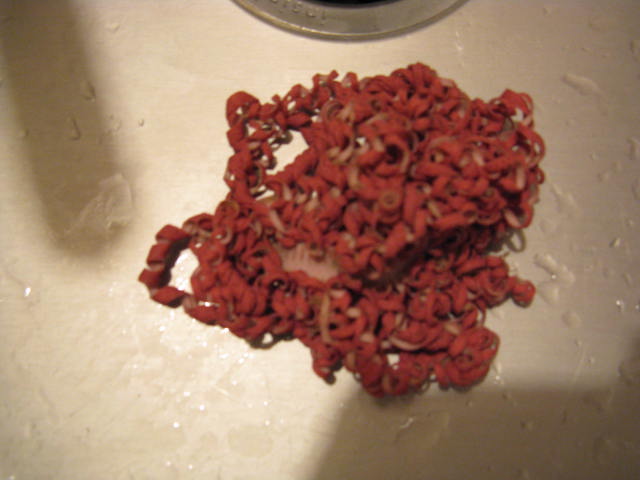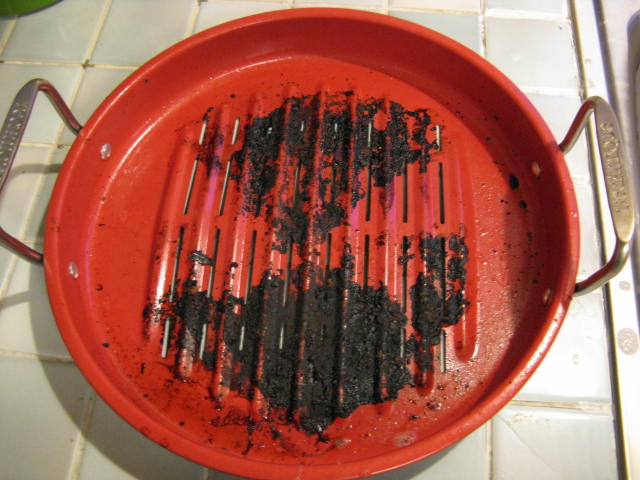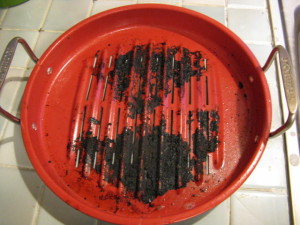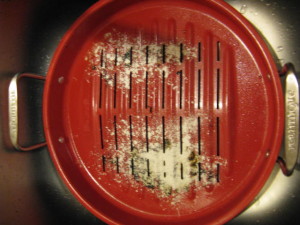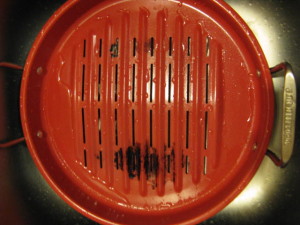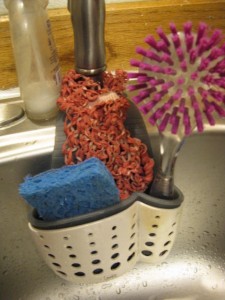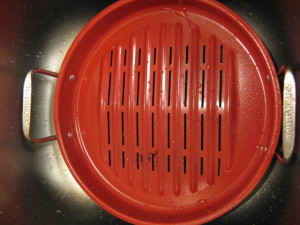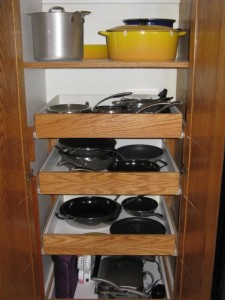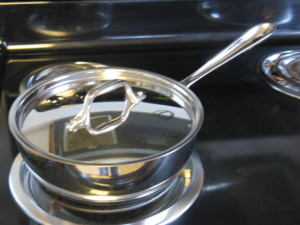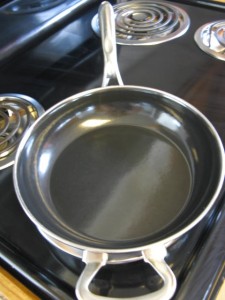I mentioned all of these in the “Baking Soda Bath” blog, but here is an official shout-out to my favorite things to clean with. Of course everyone has their own way to do things, and different things work for different people. I’d love to hear what other products you love to clean with!
Spaghetti Scrub
Spaghetti Scrub’s website domain name says it all—goodbye, detergent! These scrubs are completely natural, made of either corn cobs (harsher; not for nonstick or glassware) or peach pits (safe for the latter). Naturally color-coded as yellow and pink, respectively. 🙂 They claim that you don’t need to use ANY detergent unless something is really greasy, then you might need a dab. I still use dish soap, but it’s very mild and it doesn’t suds up quite as crazy as the big name brands do, so having the spaghetti scrub really helps me cut through the grease if the suds start to run low! I can also wash my wood cutting board and knives with it using only water, which is ideal for these types of items.
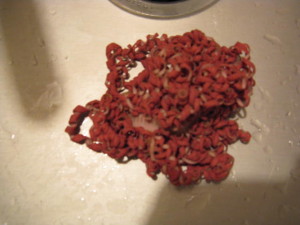 |
| Peach pit Spaghetti Scrub |
Since I do keep a few nonstick things around, I only purchase the pink ones. I do have to admit that I was extremely skeptical at first! We purchased a box for the store I worked in and used them in our break room. They come in a box of two, and these things LAST! We used it pretty heavily (you’d be surprised by how many pans we’d wash for customers…plus our own dishes from lunch and store demonstrations), and I just started to realize how well it scrubbed and how little detergent you really did need! It doesn’t totally work for wiping down counters, though, so I still crave a sponge for those jobs. I use the scrubby side of a sponge more than the regular side, and those wear out pretty quickly with heavy use like that, so the Spaghetti Scrub is a great way to make my sponges last SO MUCH longer than they used to. Things also don’t seem to stick to it like the scrubby side of a sponge can when the job is really dirty.
Point is, the price may seem a little steep the first time you buy, but they last forever and do a great job, so you won’t remember how you did things without it!
Mrs. Meyers Dish Soap
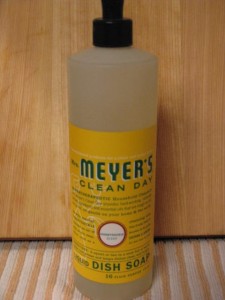 |
| Mrs. Meyer’s dish soap |
Mrs. Meyers cleaning products are probably the least expensive natural items you can find and it’s starting to get easier to find in major stores! With a lot of the national brands, personally, my skin gets irritated and I have a hard time remembering which ones do and which ones don’t. I have been lucky enough to have been able to try a few “fancy” brands and Mrs. Meyers liquid dish soap (absolute favorite is the honeysuckle scent!) is still my top pick.
Granted, if my dishes are extremely greasy, Mrs. Meyers might not suds up as crazily as the big brands still would. That is probably another reason I like having the Spaghetti Scrub on hand, since you technically shouldn’t need soap with it unless something’s super greasy. But even without the Spaghetti Scrub, I was still using Mrs. Meyers and loving it. They make great scents, too!
Insider tip: Caldrea is the same company! Their scents are a little too overwhelming for me but I do love that the sets come in a little caddy.
Casabella Dish Brush
I was never raised to use a dish brush. I’m unsure if they made them safe for nonstick back when I was growing up, but that’s the only thing my mom and I can think of as to why she never tried one before. Long before the Spaghetti Scrub was on the market I decided that I use the scrubby side of my sponge too often and wear it out pretty quickly. Once I bought a dish brush, that ended, and I soon realized that it’s a heck of a lot easier to pre-scrub a dirty pan with just a dish brush and water before dunking it in the dishpan and ruining the soapy water! I like to keep it in my arsenal even though I also keep the Spaghetti Scrub on hand. The Spaghetti Scrub isn’t as good as the dish brush for pre-cleaning because if it gets too greasy it really needs to be rinsed in soapy water, in my opinion, whereas a dish brush is usually OK with just a rinse.
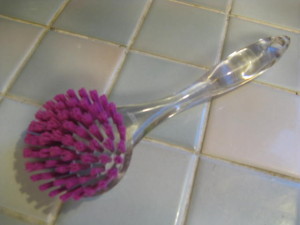 |
| Casabella dish brush |
The Casabella dish brush comes in fun colors, is relatively inexpensive, and safe on nonstick surfaces, so that’s why it’s my top choice. I don’t know that I would trust anything cheaper with my nonstick unless I really trusted the brand name like I do with Casabella.
Norpro Pan Scraper
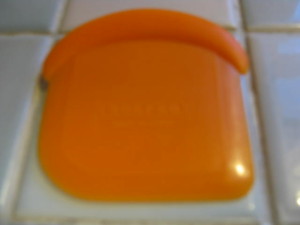 |
| Norpro pan scraper |
You can find flimsy little plastic pan scrapers for less than a dollar, but I stepped up my game and grabbed the Norpro pan scraper (for a whole dollar!) as soon as it came into our store. We used pan scrapers for EVERYTHING around that place, so I quickly learned their versatility and adopted it into my home. I also keep one at work for random office administration emergencies—you may not be surprised how handy it has been! The Norpro is a thicker, larger pan scraper with a very thick edge that is a comfortable spot to grip it at.
o-cel-o Sponge
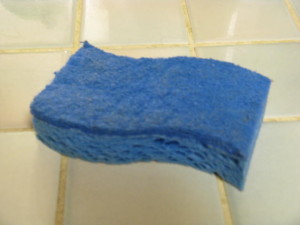 |
| Non-scratch o-cel-o sponge |
A sponge is a sponge, but generally o-cel-o is what you find in most stores. Blue means scratch-free, although they sometimes make other fun colors, too, that are scratch-free. The package will actually tell you if it is or not. I have to have a sponge around because you still need to sop up messes, and a dish brush or Spaghetti Scrub just can’t do that for you. Some people prefer a dish cloth because they feel a sponge holds germs more, but I think they both have that potential if you don’t keep them out of the sink where people are dumping things all over it. A good suggestion I came up with to ensure your sponge stays out of the sink is to buy a soap saver as a “sponge rest”. I did this at my office and it’s gone over swimmingly!
Barkeeper’s Friend
Barkeeper’s Friend is an inexpensive product that’s very similar to baking soda and Comet that you should always have on hand, because you can clean anything with it! It’s safe for nonstick and glass, and actually sucks grease out of porous nonstick surfaces. They now make a liquid formula, but the original powder and a little water go a long way. I use this to get sticky things off and stains out, amongst other uses! See “Baking Soda Bath” blog.
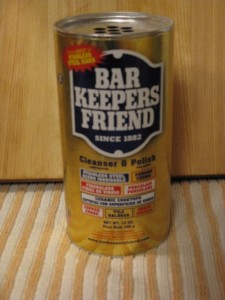 |
| Barkeeper’s Friend |
Cascade Complete Pacs Dishwasher Pods
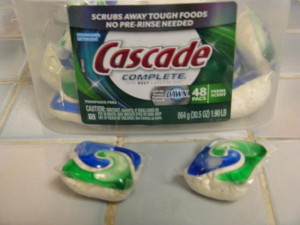 |
| Cascade Complete |
While I am not a huge proponent of using the dishwasher (ranty blog on its way!), the Cascade Complete Pacs are the only dishwashing product I have found to actually clean the dishes and not leave a residue. I once lived with a roommate who demanded we use the dishwasher and I was always running the thing 2-3 times trying to get the dang dishes clean! Another friend heard my dilemma and immediately bought me a giant pack of the Cascade with gel pods from Costco, and the rest is history!
Casabella Sponge/Brush Holder
After I decided that I couldn’t live without a dish brush, then came the dilemma of keeping it out of the sink and relatively dry and clean. I first tried one of the aforementioned Caldrea soap/lotion set caddies, but it wasn’t tall enough. I searched high and low, and finally stumbled across the Casabella Sink Sider Faucet Sponge Holder – at Ace Hardware of all places! (Our kitchen store didn’t carry it, and I lived near one of the Ace Hardware stores that also sell housewares—these stores are heaven if you can find one!! My father actually worked for Ace for many years so I always joked that it was like his store and my kitchen store had a baby together.) The only thing I wish I had thought of sooner was the fact that it comes apart for cleaning, which you should do to keep water buildup out of it. (Yes, you need to keep your cleaning products clean! This goes for your dish drying rack, too.)
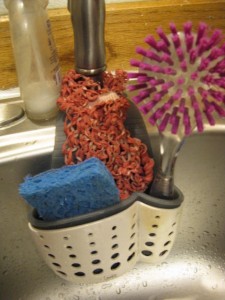 |
| Casabella faucet sponge holder |
Veg-Hog Veggie Brush
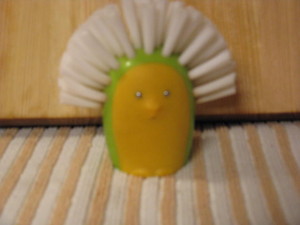 |
| Veg-hog vegetable brush |
The Veg-Hog Veggie Brush by Boston Warehouse (Animal House) is not only just plain adorable, but very functional, just like all of their products. The Veg Hog has actually been rated, which is just hilarious to think about rating cleaning supplies, but this baby makes headlines!
Another veggie brush that just feels perfectly ergonomic, at least in my hand, is this Vegetable Ring bamboo brush by Full Circle. The circle shape seems weird, but it feels ergonomic!
The only other product I am hoping to add to my arsenal again is the Chef’n Sudster. They’ve changed the design a teeny bit, but it looks the same and I thought it dispensed just the right amount of soap for washing just one dish or two at a time without having to fill up a dishpan. I did knock or drop it into the sink a LOT, which is what broke it eventually, so there’s that to consider. Looking at the new design, it actually looks less prone to breakage. Now I really want to buy another one!
